J-school prof, alumni and students take to the stage with live journalism performance in Hamilton
What is live journalism?
The traditional journalism process is centered around what journalists and editors believe is the best way to gather information to tell a story to reach their audiences.
But ‘live journalism’ invites audiences to directly participate in the storytelling process and then learn about what goes on behind the scenes.
This new kind of journalism includes “events and experiences designed to bring journalists and readers together to tell stories, debate issues and exchange ideas through speech, music, on stage performances and other multimedia formats,” according to journalism.co.uk (external link) .
Trust in the Canadian news media has sunk to its lowest point in almost seven years, according to Reuters Institute’s 2022 Digital News Report (external link) . Live journalism can be seen as an attempt to bridge that trust gap between journalists and the people that they write stories about.
Here at the School of Journalism, Adam Chen, MJ’19, founder of Talk Media (external link) , and Sonya Fatah, assistant professor and founder of stitched! (external link) , have been working for almost three years to develop some solutions to fill that gap. In October, a theatre in Hamilton hosted their latest production, Harmed in Hamilton, a live journalism experience exploring the deep rooted and systemic reasons behind why anti-bullying strategies in schools aren’t working.
The people behind the curtain
Live Journalism may be a new concept but Fatah and Chen have been experimenting with the elements of journalism in their live shows for quite some time now.
When she lived in New Delhi, Fatah founded two organizations: Nomansland, a trust focused on hosting arts and culture events from South Asian spaces in the region's cultural capital to bridge the trust gap between the residents of different backgrounds. Kona was also an interdisciplinary platform space, which hosted artwork, new design projects, and offered workshops around food and sustainability in the burnt-out interiors of a once-sweet shop and restaurant.
“You can see that there's a leaning towards: how do you engage with people in a non-traditional way? In a way that makes it fun and not necessarily institutional, even if the subject is difficult?” says Fatah.
As an MJ student, Chen enrolled in the Creative School’s Global Campus Studio course where Fatah’s stitched! lab had a project, which exposed him to a completely different and intriguing form of storytelling and aligned with his theatre background. With the support of his supervisor, Adrian Ma, assistant professor, he was able to do his master's research project as a live journalism performance, Who Let the Dogs Out (external link) .
Discovering this form of journalism pushed Chen to apply to the Social Ventures Zone and the Transmedia Zone, two incubators on campus, where Talk Media was founded.
They were both drawn to live journalism as a form to experiment with for different reasons but for one purpose: to build and engage with the community in a more intimate and meaningful way.
“It's very scary to be up on stage and be presenting your work and knowing that you can get feedback in the here and now, and that I found really attractive, because as much as it scares me … in previous forms of journalism, there's always some kind of a filter,” says Fatah.
“Process is more important than the product”
"A decolonial framework is one that takes into consideration the systemic nature in which oppressive policy affects the lives of formerly colonized people,” according to professor Kimberly C. Harper (external link) .
Fatah uses a decolonial approach in her projects by asking herself and her team: ‘how can we engage the community more deeply?’ This is a question she uses to centre the research and work that she has done over the years as a storyteller.
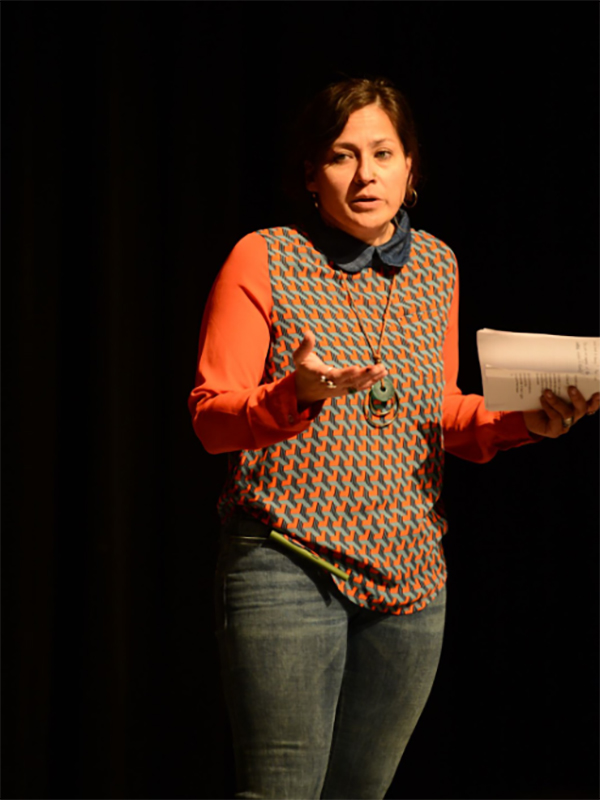
TMU assistant professor at the School of Journalism, Sonya Fatah shares stories from students, teachers and staff about acts of harm in Hamilton public schools (stitched!/Aloysius Wong.)
Fatah was drawn to oral storytelling and in particular work developed by Q'um Q'um Xiiem, also known as Jo-Ann Archibald, a member of the Stol:lo Nation, and a scholar whose teachings centre storywork practices as a decolonial research methodology.
One way in which she does this is by changing the language used by journalists. Traditionally, when someone shares their perspective to be published in a story, they are considered a source. This implies that their stories are being taken and used to fit a narrative that the journalist has chosen, but Fatah and her team at stitched! think “story sharers” is a better fit.
“If you recognize that you're sharing someone's work, someone's idea, someone's thoughts, someone's experience, you're probably going to treat it with a little bit more care,” says Fatah.
Harmed in Hamilton
A story Fatah read about Hamilton initially sparked the idea for a live performance but the pandemic put a pause on all the plans that were made. The first pandemic plan was to see the production move from a theatre to Hamilton’s Gage Park. But plans were disrupted again by the second wave until finally landing back inside at Hamilton’s Theatre Aquarius.
The show was initially scheduled for July of this year but two performers on the team got COVID, and it was postponed to October 22.
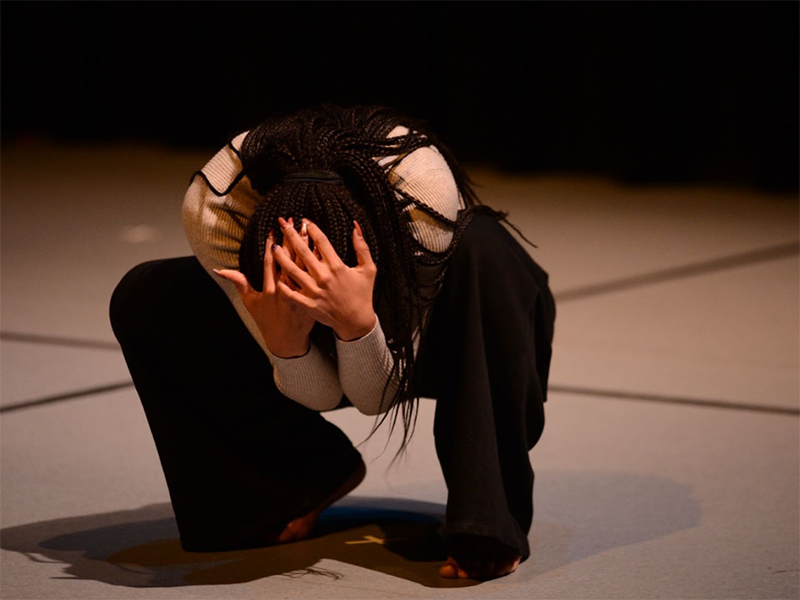
TMU School of Performance student, Janeyce Guerrier, uses dance to reflect on student experience. (stitched!/Aloysius Wong)
Chen, describes the show as “a really special, powerful moment” when story sharers in the audience started taking part in the building of the story. That disconnect in trust between the community and journalists started to fade as the show went on.
“As I was walking out, during my performance part in Harmed in Hamilton, the first thing I say is: ‘Hey everyone, I love being on stage, because you can call me fake news to my face’,” says Chen.
The theme of the production was developed over months with Hamilton’s school community members talking about their concerns about the current anti-bullying strategies in place. Once Fatah had conducted her interviews her team could get started on the performance.
J-school masters students Christin El-kholy, Maddy Mahoney and Aloysius Wong all helped bring the production to the stage, by researching organizations that do work around anti-bullying and writing show scripts. El-kholy was also a performer in the production.
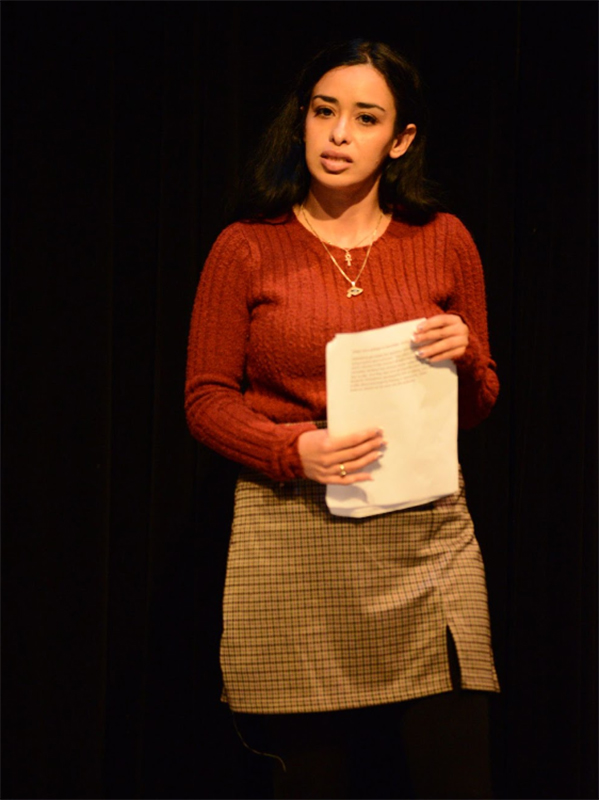
TMU Master of Journalism student, Christin El-kholy on the ineffectiveness of current anti-bullying training in Hamilton public schools (stitched!/Aloysius Wong)
Another student did marketing. “I enjoyed working on this project post pandemic and being around people. Some things just aren't the same in an online environment and performance is one of them,” says Aru Kaul, fourth year TMU journalism student and marketing specialist for Harmed in Hamilton.
Two School of Performance faculty were a part of the production at Harmed in Hamilton: Lisa Cox, assistant professor and the show’s director, and Louis Laberge-Côté, assistant professor and the choreographer. Performance students also played key roles in bringing Harmed in Hamilton to fruition: Annasofie Jakobsen was the stage manager, Margaret Stienbach was the lighting director and Janeyce Guerrier was the dancer in the production.
Future of live journalism
This form of storytelling has been gaining popularity in the past few years with some of the most prominent names in the industry being Pop Up Magazine (external link) and Black Box (external link) (Musta laatikko).
Fatah has partnered with some of the people behind the rise of this popularity, including Riikka Haikarainen, founder of Black Box, based in Finland and Glenda Cooper, co-founder of News On Stage (external link) , based in the UK. Earlier this year, Fatah attended the Live Journalism Conference (external link) in Helsinki alongside Cooper and Haikarainen, and they plan to rotate the conference between Toronto, Helsinki and London.
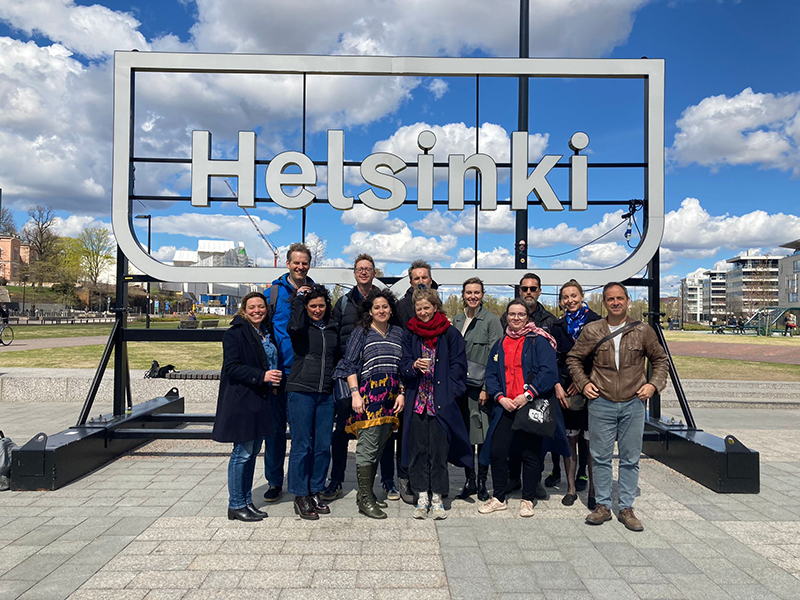
Participants of the Live Journalism Conference 2022 in Helsinki, Finland (photo courtesy of Sonya Fatah)
Fatah is teaching the new live journalism course in the Winter 2023 semester. She’s doing research with Cox and Laberge-Côté from Performance as they analyze the successes and challenges of doing an interdisciplinary project.
Closer to the end of September 2023, Fatah and her team will also be hosting a live journalism conference in Toronto.
“I think that that environment, in and of itself, is an environment that encourages innovation, and creativity and encourages people to think about doing journalism differently,” says Fatah.
Chen’s focus with Talk Media right now is a similar one: to continue building a community. He is looking for like-minded journalists to grow in this space together and to integrate them more with performers in the community.
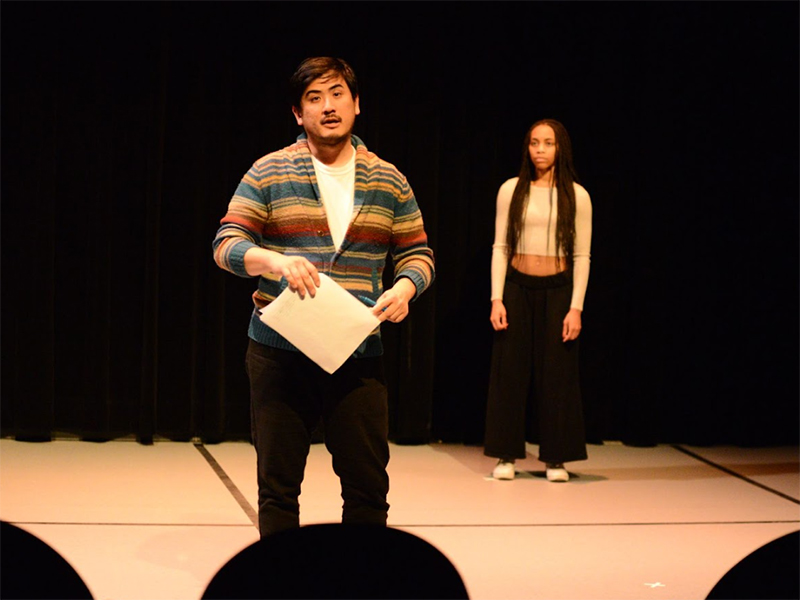
TMU graduate and Talk Media founder Adam Chen takes apart institutional definitions of bullying and asks the audience to engage with the question of defining acts of harm. (stitched!/Aloysius Wong)
Live journalism is one of the many unconventional pathways you can take when graduating from j-school, and Fatah encourages students in their upper years to reflect on the structural knowledge that they have been taught and then use it to think outside of the box career-wise.
She says, “I would see live journalism is just one other pathway, it's not exceptional, it's not different, but if you're a person who is intrigued or guided by asking questions or playing with form, I think it's an interesting space to experiment.”